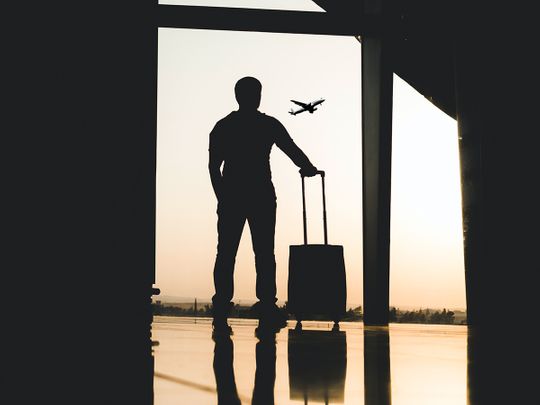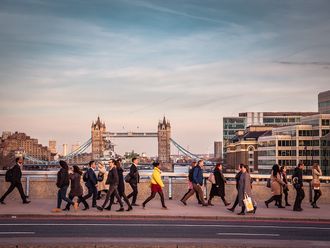
Leisure travel always picks up after school lets out in the U.S., but the first summer without any pandemic-related restrictions worldwide is shaping up to be exceptional, likely exceeding record levels set in 2019.
A confluence of post-pandemic forces means flying is likely to be crowded and expensive for at least the rest of this year. About 275 million people are expected to travel between May 25 and Sept. 4, according to TD Cowen. That's 7.4 per cent higher than in 2019 and 19 per cent higher than last year.
How do fares look this summer and where are people flying?
International markets are hot this summer, particularly anywhere in Europe, because it's the first busy travel season since many countries dropped vaccination requirements and quarantines and the first since the World Health Organization lifted its health emergency.
As a result, airlines are devoting more capacity to international routes than they did last summer. Fares from the U.S. to Europe are the highest they've been in more than five years, according to travel-booking app Hopper.
Tickets are averaging $1,167 round trip, compared with $850 last year and $861 in 2019. Tickets to Asia are averaging $1,817, higher than both the $1,468 average in 2022 and $1,122 in 2019, Hopper data shows. If you haven't booked a European trip yet, you may have a hard time finding a seat. Delta Air Lines Chief Executive Officer Ed Bastian said last month that 75 per cent of its international seats had been booked for the summer.
Domestic prices are averaging $306, down 19 per cent from last year as carriers offer more seats and spend less for jet fuel. But it's still well above the $288 average in 2019, according to Hopper.
Why aren't higher fares and the threat of recession discouraging travel?
It's true that normally the travel industry is sensitive to economic contraction as corporations cut that spending first and higher prices deter some consumers. But this time is different because of pent-up demand among those who stayed put for much of the past three years because of COVID.
Industry executives say consumers are shifting from their feverish spending on products during the pandemic and now want to spend on experiences. They seem willing to absorb the high prices, especially for travel abroad. Flexibility in work schedules and the ability to combine work and leisure trips is also feeding demand.
American Airlines says 35 per cent of its volume in the first quarter came from travellers taking blended trips, compared with the 30 per cent who took business-only trips. One category that hasn't rebounded is corporate travel, which is still below pre-pandemic levels.
How did airfares get expensive?
It's mostly a matter of supply and demand. Travel spending dropped by half in 2020, the first year of the COVID pandemic. In response, the airlines took planes out of service and reduced staff.
Now, demand has bounced back. But because of a shortage of fully trained workers and too few air traffic controllers, the U.S. Federal Aviation Administration says there will be 2.6 per cent fewer flights over the Memorial Day holiday than the same period in pre-COVID 2019.
Those factors gave airlines an opportunity to raise prices, and they've been reporting record revenue as a result. Airlines are also trying to offset some of the cost of expensive new labor contracts after many workers went without raises during the pandemic.
Why have U.S. airlines been so slow to restore capacity?
Airline workforces were devastated during the pandemic. Although the terms of federal aid to the industry prohibited firings, carriers offered lucrative early retirement packages and extended leaves. Almost 77,000 people left, shrinking the workforce by about 18 per cent, according to Airlines for America, the lobbying group for U.S. carriers.
As Americans started getting vaccinated against COVID in the spring of 2021, they resumed buying tickets, and airlines ramped up flights. But the ramp-up was limited, as airlines found themselves competing with companies like Amazon.com and FedEx for workers in roles like customer service.
Airlines were forced to reduce their flying plans again in 2022, this time as lingering pilot shortages and training bottlenecks combined with record jet fuel prices and air traffic control snarls.
Some carriers still have parked planes linked to the pilot shortfall; American Airlines, for example, has as many as 150 regional jets that are underused or not flying. Now, a lack of air traffic controllers has forced carriers including Delta, United Airlines and JetBlue Airways to cut their flights by as much as 10 per cent this summer from their initial plans at some of the busiest airports. Another factor is delays in receiving new planes and parts, which crimped the airlines' ability to add capacity.
Why the delays of new planes and parts?
They're are a holdover from the pandemic. Plane makers like Boeing and Airbus are still struggling to get all the parts they need. Those same supply shortages also mean that airlines don't have all the parts they need for maintenance and repairs. Boeing CEO Dave Calhoun says those limits could last "a very long time."
Southwest Airlines trimmed its growth plans for the year after Boeing cut expected 737 Max deliveries a second time, and said it's reconsidering plans to add 7,000 employees as a result. If high demand persists, fares will probably stay elevated because airlines can't add enough capacity to match it.












